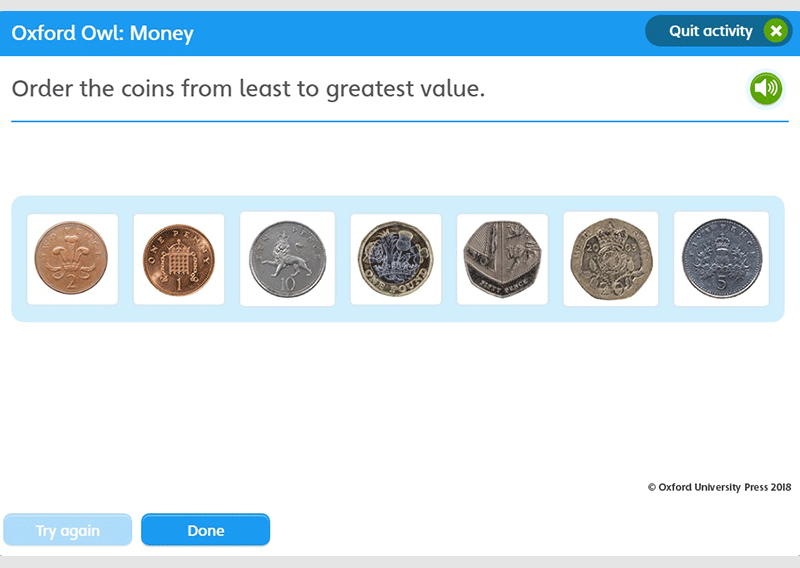Measurement in Year 1 (age 5–6)
In Year 1, your child will have explored measurement in relation to length, height, weight, volume, and time. They will also learn about money, recognising the value of coins and notes.
The key words for this section are measurement and capacity.
What your child will learn
Take a look at the National Curriculum expectations for measurement in Year 1 (age 5–6):
Solve practical measurement problems
Your child will compare and describe:
- Lengths and heights: long, short, longer, shorter, tall, short, double, half.
- Mass/weight: heavy, light, heavier than, lighter than.
- Capacity/volume: full, empty, more than, less than, half, half full, quarter.
- Time: quicker, slower, earlier, later.
Your child will solve practical problems using all these measures and terms.
Measure and record length, weight, capacity, and time
Your child will use non-standard units to measure mass/weight. For example, how many letter blocks weigh the same as this book? They will also use standard units. For example, how much does their favourite toy weigh in grams?
Your child will use non-standard units to measure the capacity/volume of objects. For example, how many cups of sand does it take to fill a water bottle? They will also use standard units like litres.
Your child will be able to record their findings for all of these types of measurement.
Recognise coins and notes
Your child will recognise and know the value of different coins and notes.
Sequence events in chronological order
Your child will be able to put events in time order. For example, they might order all the activities that they do in a day, from the morning until the evening.
Tell the time to the hour and to half past
Your child will be expected to use basic language of time, such as o’clock and half past. In addition, they will be expected to know that we measure time in years, weeks, days, hours, minutes, and seconds.
How to help at home
There are lots of everyday ways you can help your child to understand measurement. Here are just a few ideas.
1. Compare lengths and height
You can have lots of fun helping your child compare and order objects by length or height.
You could suggest that they put all their soft toys or toy vehicles in order according to their height. Ask them to explain what they have done. Encourage your child to use the language taller, shorter, and longer if possible.
2. Practise using money
When you are out shopping, be sure to draw your child’s attention to coins and notes. Point out prices in the supermarket and talk about which coins and notes we could use to pay for things.
Seeing the money used will help them understand that each coin has a different value. Ask your child to find the totals using different combinations of coins. For example, could you make 20p using the coins in your hand?
Activity: Coins

Order the coins by value.
3. Use the language of time
When you are talking about time with your child, try to use language like before, after, next, first, today, yesterday, tomorrow, morning, afternoon, and evening. If you frequently use this precise vocabulary, your child will pick it up in no time.
4. Make a calendar
Ask your child to sequence all your family events in a typical day or week in a planner. Talk to them about different parts of the day, the days in a week, and even the months in a year.
It could be useful to get into the habit of using a calendar with your child. As well as tracking weekly events like football practice, see if your child can find their birthday and other important dates. To make the idea of using a calendar more appealing, your child could try making their own as a fun craft activity.
5. Try measuring activities
Talk together about standard units of measurement:
- centimetres and metres when measuring length
- kilograms and grams when measuring weight/mass
- litres and millilitres when measuring capacity/volume.
You could ask your child to identify standard units of measurement on cereal boxes, milk cartons, and shampoo bottles – measurements are everywhere around the house.
You can also measure using non-standard measures. How many paces is it across the room? How many paperclips long is this book? What about this one? Which is longer?
6. Bake together
Another great way to practise measurements is to give your child the opportunity to measure ingredients when you are cooking or baking.
Identify the capacity/volume or mass/weight of ingredients you are using, either using scales or less formal methods like cupfuls. Discuss how and why we measure different ingredients with different units.
Take a look at some of our free recipes.
